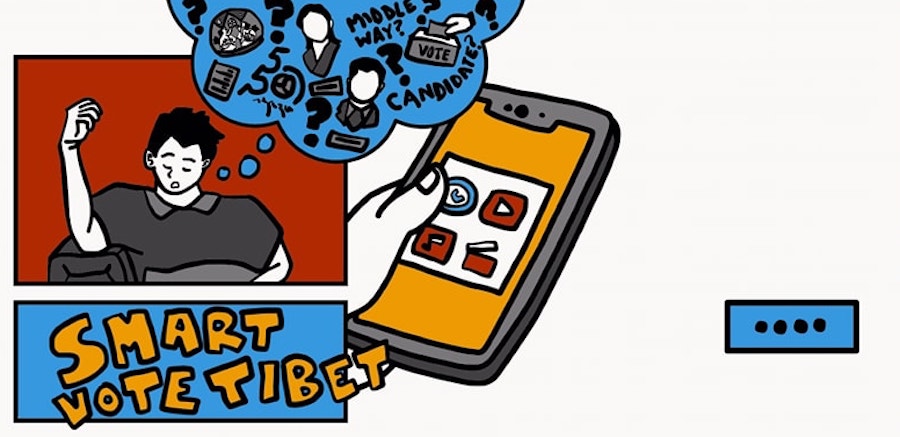By Tenzin Lekdhen
A prominent and prevalent issue in elections of all kinds is familiarity (unfamiliarity, for that matter) between voters and candidates regarding their views on social issues and political stands. SmartVote Tibet is an attempt to address that gap.
The online tool Smartvote Tibet launched earlier this week allows voters to evaluate prospective Presidential (Sikyong) and Parliamentary (Chithue) candidates in a “fact-based and informed way” by gauging their stand on various issues through questions that are gathered from the public. The platform is an adapted version of Smartvote, which was first developed in 2003 by Politools in Switzerland with operational success in numerous countries including Australia and countries in the EU.
To breakdown the platform for the public, the procedural steps are simple. Users answer questions with four unambiguous options: Yes, rather Yes, rather No, and No. There are 37 questions. The number of questions a user is required to answer is arbitrary; more answers lead to more accurate matching. The user inputs are matched against the candidates’ responses and are given “congruence points.” For example, if a candidate’s and user’s answers to a particular question are the same, 100 congruence points are given. Fewer congruence points are given if the answers match partially or less partially. 0 points if the answers are diabolically opposite. The final result is taken as the average of all congruence points. The candidates for both Sikyong and Chitue are ordered based on the magnitude of the mean congruence point.
Additional features include a Smart Spider mapping, which provides a visual political profile of the candidate and user. It can be used to evaluate and compare the strength of a candidate’s stand on five political issues (e.g., Expanded Welfare and Education, Cultural preservation, etc.)
The platform, SmartVote, is a novel and viable approach to address the gorge of unfamiliarity that lies between the candidates and voters. However, it is not entirely immune to other liabilities.
A large number of candidates seemed to have not participated. The platform requires both the candidates’ and voters’ inputs, the former more so, to function optimally. Hence the shortage of participation might contribute to a low qualitative overview of prospective candidates.
Another issue is with the “congruence points” system that governs the matching process’s underlying mechanics. Since the final result is the average of all congruence points awarded to each question, all issues are treated as having the same gravity.
A final concern lies in the difference in the number of questions regarding issues. Some issues have more questions than others, which might skew the final result towards candidates with a more popular overview of that specific issue.
SmartVote Tibet, with all its perks and quirks, does not yet seem to be a truly reliable platform to determine which candidate aligns with one’s political inclination. But the platform introduces voters to previously unknown candidates. Which, according to their website, seems to be the goal.
(Views expressed are his own)
The author is a second year student at Christ University, Bengaluru majoring in Physics and Mathematics.










